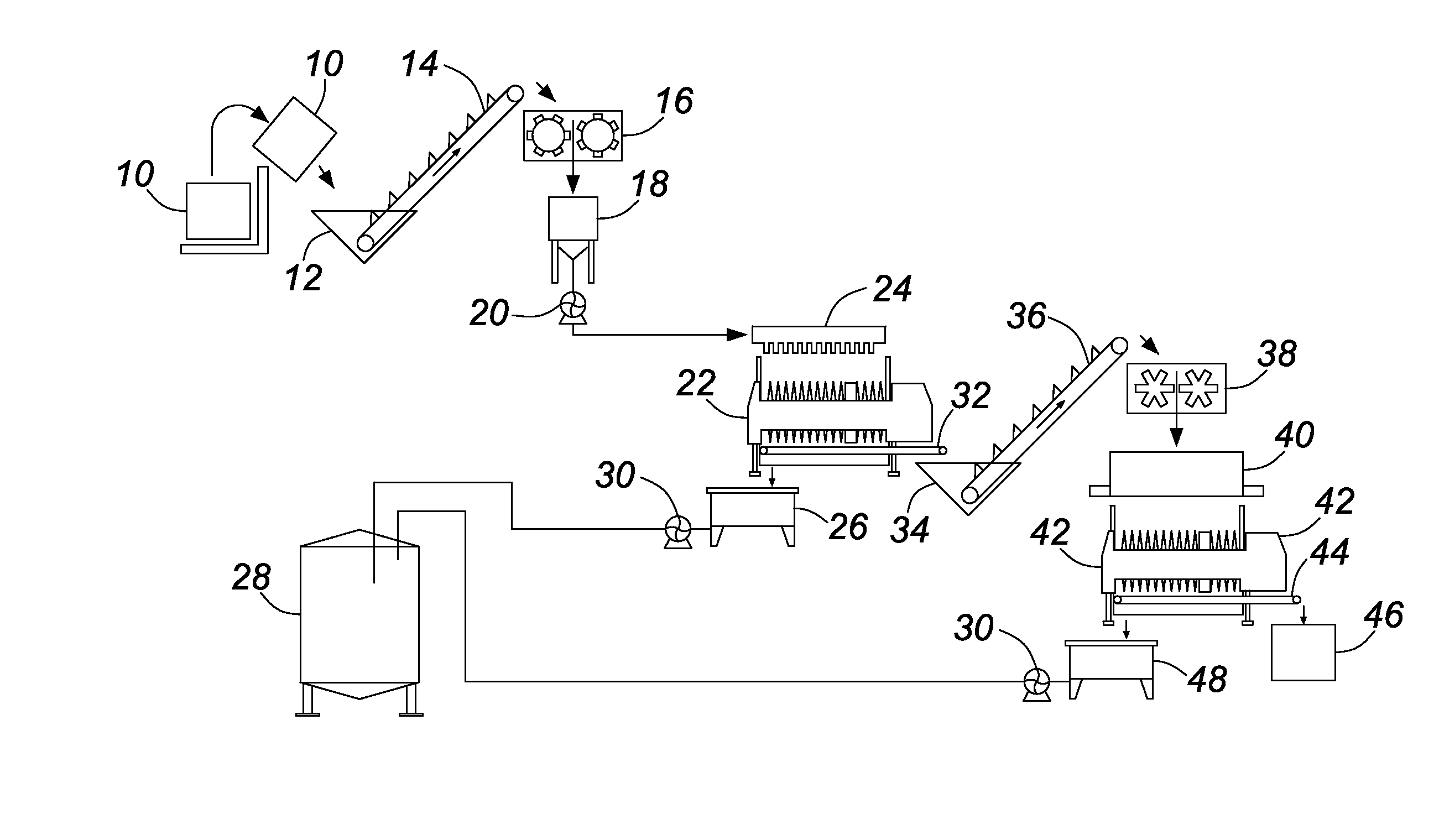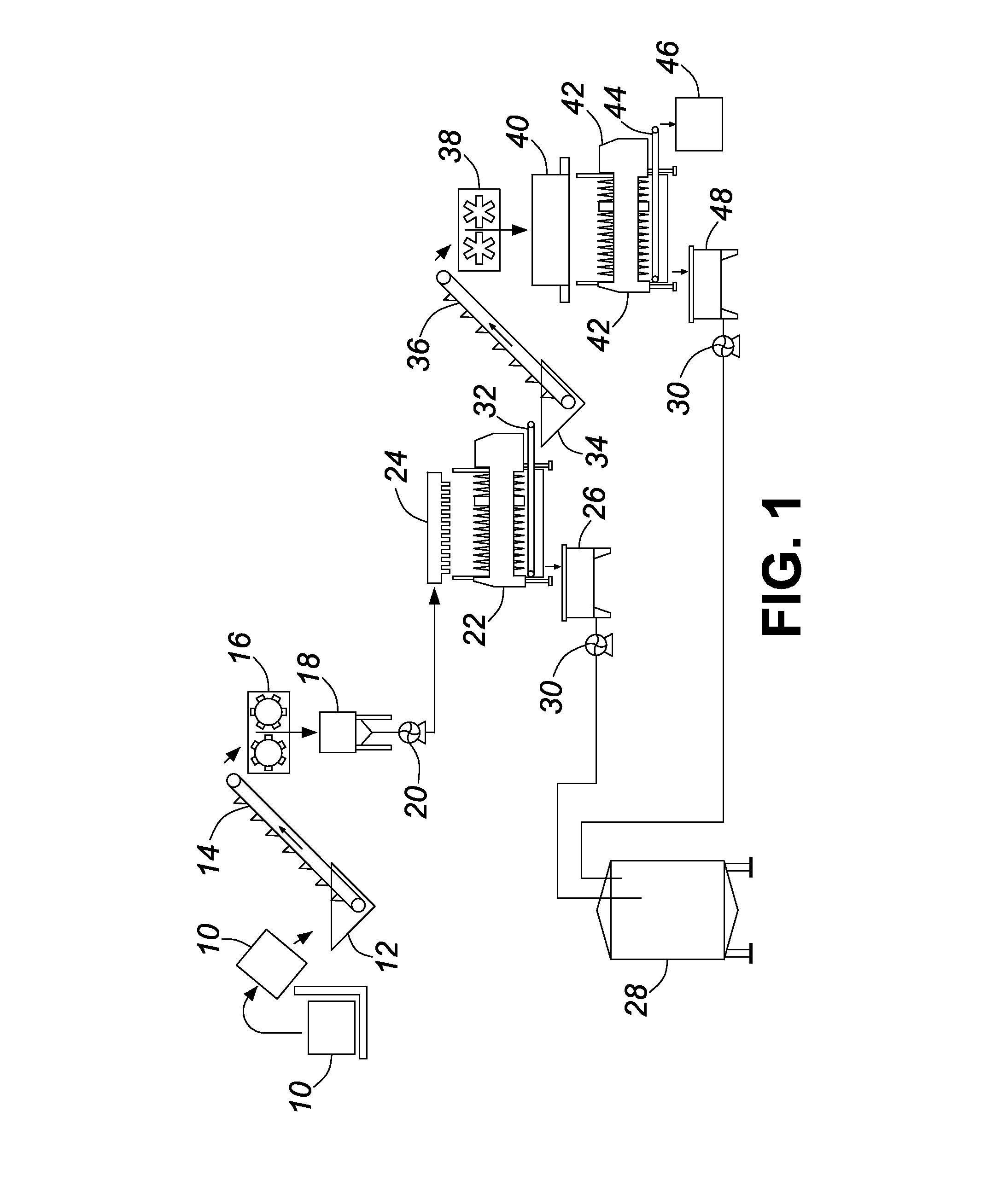Method and Apparatus for Pressing Fruit
a pressing device and fruit technology, applied in the field of pressing tools and fruit, can solve the problems of large machine, no juice producer can afford to ignore residual juice, difficult to extract all the juice, etc., and achieve the effect of ejecting the juice quickly, quickly and easily loaded and emptying
- Summary
- Abstract
- Description
- Claims
- Application Information
AI Technical Summary
Benefits of technology
Problems solved by technology
Method used
Image
Examples
Embodiment Construction
[0014]Initially, FIG. 1 illustrates a first embodiment of the present invention, various components being illustrated somewhat schematically, and showing the overall process for extracting juice from fruit. The fruit is initially received in large boxes or bins 10 which are dumped into a hopper 12 associated with a conveyor 14 which conveys the fruit to a suitable grinder 16 which turns the fruit into a mash which is then dumped into a surge tank 18 for flow into a pump 20. The illustrated grinder is a pug mill having two shafts. However, other devices may be used to create a fruit mash such as hammer mills, shredders, graters, etc.
[0015]The pump 20 pumps fruit mash to a primary thin layer press 22 of the type shown in U.S. Pat. Nos. 4,892,665 and 5,275,097, the mash being introduced into the primary press via a nozzle filler 24. In the design illustrated in FIG. 1, the pump 20 is the primary pump. Once the primary press is suitably filled, the operation of the pump is discontinued,...
PUM
 Login to View More
Login to View More Abstract
Description
Claims
Application Information
 Login to View More
Login to View More - R&D
- Intellectual Property
- Life Sciences
- Materials
- Tech Scout
- Unparalleled Data Quality
- Higher Quality Content
- 60% Fewer Hallucinations
Browse by: Latest US Patents, China's latest patents, Technical Efficacy Thesaurus, Application Domain, Technology Topic, Popular Technical Reports.
© 2025 PatSnap. All rights reserved.Legal|Privacy policy|Modern Slavery Act Transparency Statement|Sitemap|About US| Contact US: help@patsnap.com



